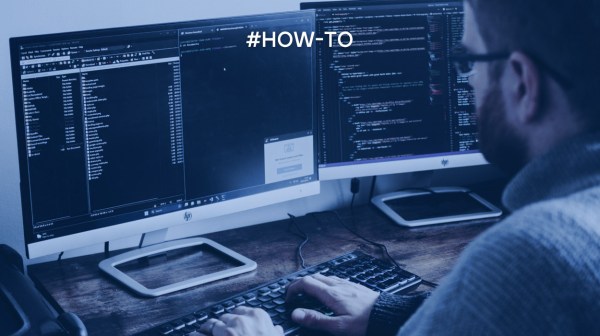A little history
I could well have started out in a 3.0 version, where secretaries focused on mechanical tasks such as note-taking, by hand of course, and document management, which was also done manually. Computers already existed, I’m not that old, but we limited ourselves to using Word as a word processor, Access to create databases, and some programs designed by the company itself to perform other administrative tasks, such as organizing trips or managing expenses and purchases.
The offices were full of papers, folders, notes, etc. The good ones always carried their notebook and pen with them, even to the coffee machine, which was usually near their desk, as cell phones didn’t exist. We spent the day answering calls. Phrases such as “I’m sorry, he’s busy,” “He’s out of the office, we’ll call you back when he returns,” or “He can’t take your call right now” were our mantras. I have a friend who met her husband this way. The supplier was so persistent and she was so nice that they became friends and that friendship turned into marriage. They are still together today.
Then we became version 4.0, with the arrival of faxes, emails, and the first cell phones. We moved from Access to Excel, and since we were using this program to create databases, we took our first steps with simple pivot tables and improved our use of Word, becoming experts in page numbering, creating indexes, using synonyms and spell check, and designing a book structure. We became “manual-creating machines” with this tool.
Desktop phones also changed. They became bigger and bigger, filled with little buttons, and we had all our bosses’ numbers stored in the memory. We learned the numbers of the people who called just by glancing at the display on that device. I used to have a list stuck to the phone with my colleagues’ numbers and their license plate numbers, and every time someone called, I loved to joke and say, “Good morning, Mr. (license plate number).” It was a lot of fun.
We became 4.1 when those little cell phones allowed us to receive calls from landlines. Then we could stretch our legs, have coffee on another floor, and meet people. Those were our first “work wings.”
With the arrival of BlackBerrys, where we could see our email and our bosses’ email, we adapted to a new technological leap. We were impressed by the fact that we could answer emails from that device with a mini keyboard, without having to sit in front of a computer. We didn’t realize that, although we felt freer, we weren’t actually disconnecting from work so easily. I even answered emails in the middle of the night when we were working closely with colleagues or clients on the other side of the world.
During the pandemic, the virus came hand in hand with Office 365, which was another giant leap forward in terms of technology. We started storing our documents and those of our teams in the cloud. It took us all a while to learn the difference between our personal cloud and the shared cloud, and since “you can’t please everyone,” there were some who were reluctant to share. So, in addition to feeling like Saint Peter encouraging everyone to come in and checking that the documentation was stored neatly in folders with a certain logic, we became great trainers and taught others how to manage sharing in the most secure way possible.
In this version, now 7.0, we became experts in Sharepoint, OneDrive, Outlook, Forms, Teams, and Lists. We had no choice but to jump on the bandwagon and push forward, as we once again encountered resistance from those who did not know how to use these platforms. Teams kept us in touch at a time when we felt very alone. We were able to organize calls, meetings, video calls, share screens, and teach others so that we could work better and more closely as a team.
We have also become masters of Outlook, getting the most out of this tool. If you look at an executive assistant’s PC, you will see that not only are they able to view several people’s schedules at once and manage them seamlessly, but they also have everything color-coded, labeled, categorized, and bookmarked, with folders organized by topic, as well as notifications that help us not miss anything and quickly and easily discard what is not useful.
From there, we moved on to the automations created with Power Automate, which have allowed us to synchronize files, send alerts, extract information automatically, and help us with all those repetitive tasks in our day-to-day work.
All this has meant moving from being a mechanical executive assistant to a much more strategic role, key to decision-making and business management. In some companies, executive secretaries have a leadership role and much more specialized training. This needs to improve and be extended so that it is the case everywhere.
The arrival of teleworking
The arrival of teleworking could also be considered another advance and something we should learn to manage, as it has its pros and cons. It gives us the freedom to work from anywhere. We are no longer tied to a phone and a desk, but on the other hand, it makes it difficult to disconnect digitally, as we carry all our information on our cell phones, which have become an extension of ourselves and are essential to our lives.
The latest version of this position is the one that emerges with the inclusion of AI in our work. As I explain in the book, we have to become friends with artificial intelligence, use it ethically and responsibly, and harness its full potential. It is very useful for automating all those time-consuming tasks such as email management, meeting minutes, scheduling meetings, document management, translations, etc. I read in an article by Gartner, a renowned technology research and consulting firm, that artificial intelligence is transforming the workplace by eliminating digital friction and improving productivity. According to their predictions, in less than two years AI will be adopted naturally and will become more of a collaborator than a simple tool.
I have been working in this position for almost thirty years and have experienced all these technological advances firsthand. A couple of years ago, I realized that executive assistants are resilient by nature. We have adapted over time to every new development, we have been proactive in learning every new program and every new “invention,” and we have also taught others, which has made us much more empathetic.
My personal project
That’s when I decided to write a book about all the anecdotes and situations we had experienced when incorporating all these changes into our work. I collected many stories and wanted to tell them in a fun way so that my future readers wouldn’t get bored and would find them interesting. As I gathered all this information, I realized that behind it all there was a psychological foundation full of soft skills that we had also acquired over time. This is not something that is taught at university. So I decided to talk about resilience, empathy, assertiveness, proactivity, sense of humor, productivity, motivation, sisterhood, etc.
Like a good secretary, I organized my own cloud by topic. I set myself my own homework: listening to audio recordings of various professionals talking about all these skills, taking online courses to learn more, watching certain videos, etc., and I brought it all into my own field by relating it to our profession. I have to say that it was a great field study and I really enjoyed the process. Not only did it help me write the book and make it more professional, but I also found it very useful on a personal level.
I really enjoy drawing, and I think that capturing ideas in a “Design Thinking” type of illustration can help others better understand concepts, so I decided to add some drawings of this type to my book to make it easier for the reader to understand. I also did other illustrations to add more color and humor to the story.
Throughout this time, I filled notebooks with notes and ideas, using apps on my phone and computer, such as Trello, OneNote, and ToDo.
And finally, to make it more relatable to everyone, not just those of us in this role, I decided to relate it to cinema. I have been a huge movie buff for as long as I can remember, so I used metaphors from well-known movie characters, scenes from films, etc. I also wanted to pay special tribute to secretaries by dedicating a chapter to our appearance in films over the years and how our role has evolved.
Finally, I wanted to add that companies like Telefónica, where I am extremely fortunate to work, are leading the digital transformation, and this has an impact on roles such as that of the executive assistant. You could say that we are going hand in hand on this long technological journey. Something for which I am deeply grateful.
This text is inspired by “El Club de las Sombras” (The Shadow Club), a book that, in addition to being full of anecdotes and experiences, both mine and those of other colleagues who work or have worked in this role, also talks about technology in this position.









